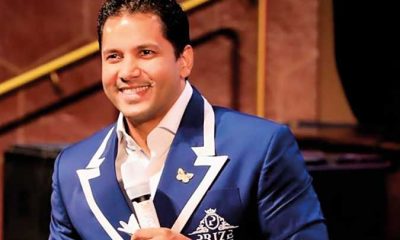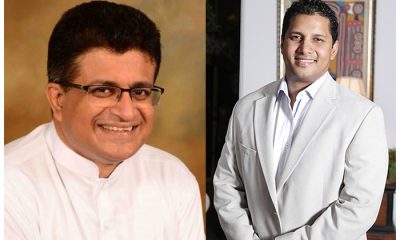Opinion
Jerome Fernando and his profane gimmicks – II
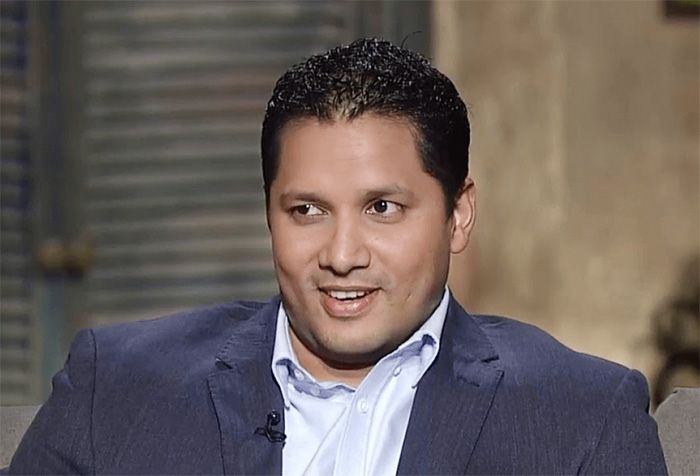
By Rohana R. Wasala
(Continued from yesterday May 24, 2023)
Some well-meaning, erudite, but very naive and innocent, young bhikkhus are challenging Paster Jerome Fernando to a debate over his deprecatory remarks about Buddhism; that, I think, is ridiculously ingenuous and unnecessary, because that is giving that man a measure of dignity that he doesn’t deserve, and also because he cannot be credited with a decent understanding even of Christianity, let alone anything additional outside that domain. These young monks are being eclipsed in their calm but determined attempt to react to Jerome’s disinformation and deception without any ill will. By whom? They are getting overshadowed by a few yellow-robed imposters who are themselves Buddhist versions of pastor Jerome Fernando. Actually, those few false monks and the fake prophet are birds of a feather probably fed by the same hands, as some say.
It has also been observed that certain discredited politicians are exploiting the opportunity that came their way through this obviously well-rehearsed Jerome Fernando episode to take a dig at each other for the heck of it, without utilising it to repair the damage it is causing to reconciliation. Last but not least, where are the Ven Mahanayake theras? Their silence in crisis situations has often aggravated issues affecting the Buddha Sasana. The online media I normally consult have nothing in this regard. However, one can’t blame the Ven Mahanayakes because they avoid politics, as they have done down the centuries. They used to advise the monarch only in spiritual matters, and the monarch took responsibility for looking after the Shashanaya. The most senior monk or monks, close to the royalty, offered their opinion in succession matters on rare occasions, and also when the ruler failed in his duties or when there were foreign threats to the nation. The Sangha never took part in ruling, but remained above the ruler. The Buddhist Sangha is a very democratic community, where one monk has no control over another. Times have changed. It is urgent that the Mahanayakes do more to save the Buddha Shasanaya including the Fourfold Assembly of Followers (Sivvanak Pirisa) of male and female lay Buddhists and bhikkhus and bhikshunis.
Back to the topic. Meanwhile, a complaint was lodged with the Criminal Investigation Department (CID) by the propaganda secretary of the political party, Pivituru Hela Urumaya (PHU), Iranga Vidvath Mendis, in connection with the relevant offensive statements made by Jerome Fernando who calls himself a prophet, which are derogatory to the Buddha, Buddhism, and other religions. This is the only meaningful reaction I have seen so far to Jerome Fernando’s outrage (up to the time of writing). The complainant demands that the law be applied to the (suspect) offender in this case in terms of the International Covenant on Civil and Political Rights (ICCPR) Act No. 56 of 2007.
The aforementioned petition to the CID was published in a news report in the online lanka c news. It quoted the following fromJerome Fernando’s importunate harangue:
“This is what separates Christianity from Buddhism. Because for a Buddhist in their mind, it’s like, okay, අනුන්ට කලදේ තමන්ට පලදේ in a sense, it’s true, especially if you do something to a prophet. Anyways. Now, but in the Buddhist mind, they never hear the love of Buddha. Are you hearing this? Their focus is enlightenment. But to be enlightened, you need light. The Buddha himself, the name Buddha means enlightened one. Ladies and gentlemen, what is greater, light or enlightened? Jesus said, I’m the light of the world. so i tell you now, jesus didn’t said I’m the enlightened one, No, no, no, no. Jesus came from a different wavelength. Jesus said I’m the light. So, I submit to you, the Buddha was looking for light. He was actually looking for Jesus. This is why every Buddhist needs Jesus.”
I came across a YouTube video clip of the relevant part of Jerome Fernando’s coercive religious rant against the Buddha, Buddhism and Buddhists that contained more. There was a singing part to it too, that ridicules such traditional curative and protective magical remedies as tying charmed threads, anointing charmed oil, etc., usually found among rural folk, as superstitious practices based on Buddhist teachings. Those are cultural things and should not be confused with Buddhism. Buddha did not advocate such things. He himself visited a physician called Jeevaka when he fell ill, according to the known life of the Buddha. He preached no religion, and never prescribed blind-faith based devotional practices or mindless rituals. Even the most ignorant Buddhists know that magical cures like charmed threads, oils, and chants are not part of the doctrine they actually follow. Instead, those ritual performances are part and parcel of the established holistic native healing culture which maintains the vital balance between the physical and mental aspects of the patients’ health. These ancient healing arts have survived, particularly among villagers, into modern times. Jerome also staged some faith healing episodes, not different from them. Such magical fake cures are daily performed in many hundreds of devales dedicated to local deities found across the country which are patronised not only by gullible villagers, but by superstitious city dwellers including politicians and businessmen among others of the same ilk seeking divine assistance with their nefarious projects. Why should a ‘prophet’ demean his god by descending to the level of a village kapurala unless he was a genuine fake?
In the letter to the CID referred to above, Mendis has left out (probably, as irrelevant to the point of his plaint) Fernando’s disparaging references to Hinduism and Islam and relevant sacred figures, which are equally outrageous, such as that Hindus venerate animals. A common allegation he raised against the leaders of all three non-Christian religions did not preach Love! But this fake prophet’s real target is the Buddha, his teaching and the Buddhists, his followers, whom he demeans, by implication, as a spiritually misguided lot. Though it is evident that Jerome is proficient enough in Sinhala for preaching to them, he speaks only in English and has himself interpreted in Sinhala. That, I think, is just an act he puts on to further impress his apparently mesmerised audience, whose awed gazes were fixed on his constantly beaming beatific smile.
What is Jerome Fernando saying in the snatch of speech quoted above? Simply, nonsense. He appears to be ignorant of his own religion of Christianity and its truly great founder Jesus Christ. Christianity came five or six hundred years after Buddhism. The latter is definitely beyond pastor Fernando’s power of understanding. What did Buddhists do to him (if he means himself by ‘prophet’) for him to say “anunta kala de tamanta pala de” (which would be equivalent to the English proverb ‘Curses come home to roost’)? (When he said this, though, he seemed to be mocking his own ‘prophet’ act!) This idea of ‘retaliatory justice’ is not part of the Buddhist concept of karmic causation. People from different cultural backgrounds accept the idea that bad deeds earn you bad results and that good deeds bring you good results, as a self-evident truth. The Karma concept taught in Buddhism is much more profound and complex than ‘Curses come home to roost’.
A word about the idea of love that Jerome finds missing in Buddhism. Buddhism is nothing if it is not about wisdom and compassion. The Buddha does uphold love as a positive emotion, but says that it is ultimately based on selfishness/the illusion of ‘self’. The Buddha’s teaching recognises a difference between love (that you feel for a person) and unconditional universal compassion or loving-kindness (maitri, friendliness) towards all sentient beings, something that is completely selfless. I think Christian love is also very close to or identical with the Buddhist concept of loving-kindness. To me it looks like the highly intelligent Jerome Fernando has not so far cared to grasp at least a faint idea of the Buddha’s profound dhamma. He has no sense of history, for he doesn’t know that the Buddha lived five to six centuries before Jesus was born. Otherwise, if he is in his right senses at least temporarily, how can he say that the Buddha was looking for Jesus? What do you know about the Enlightenment concept taught in Buddhism, Jerome? Obviously, NOTHING! You equate enlightenment to lighting up or illuminating something. That is stupid. An Australian YouTuber of Sri Lankan origin says that he had some slight acquaintance with Jerome as a young Burgher with a different name doing modelling work for commercial firms about twenty years back. It’s plausible information. He uses both Sinhala and English equally fluently. Oops! I almost forgot. At the end or thereabouts of his Buddha bashing, quite paradoxically, like a true Christian preacher or a genuine Buddhist monk for that matter, he admonishes his congregation: “Never persecute anybody, never shame another person’s faith”.
I will wind up with a reference to the Buddha’s famous Kalama Sutta discourse. The Buddha advised his disciples to question and examine even the Tathagata (Buddha) himself to find the trustworthiness, the authenticity, of the teacher they chose to follow. A group of young men called the Kalamas came to the Buddha with a question. They wanted to learn from him how they could separate truths from falsehoods uttered by the various venerable recluses and brahmanas who visited their village of Kesaputta from time to time and preached their different doctrines that disagreed with each other. Obviously, the young men had heard of the fame of the Buddha who himself had studied under the most famous teachers of the time and exhaustively analysed their teachings, and dissatisfied, had embarked on his own long and assiduous search for the Truth and eventually attained Enlightenment. The Buddha’s advice to them was: “Kalamas, do not be led by reports, or tradition, or hearsay. Be not led by the authority of religious texts, nor by mere logic and inference, nor by considering appearances, nor by the delight in speculative opinions, nor by seeming possibilities, nor by the idea: ‘this is our teacher’. But…when you know for yourselves that certain things are unwholesome (akusala), and wrong, and bad, then give them up… and when you know for yourselves that certain things are wholesome (kusala) and good, then accept them and follow them”. (I am quoting here from Ven Walpola Rahula thera’s classic dhamma compendium ‘What the Buddha Taught’ first published in London in 1959, and reprinted many times since, which Jerome Fernando may profitably read and still remain, or learn to be, a pious and virtuous Christian, which, I am afraid, he is not at present.)
I can easily answer your criticisms of Hinduism and Islam, but it is better for you to learn by yourself their moral essence that is as noble and as ennobling as Christianity.
(Concluded)
Opinion
Turning Trade Disruptions into Opportunities
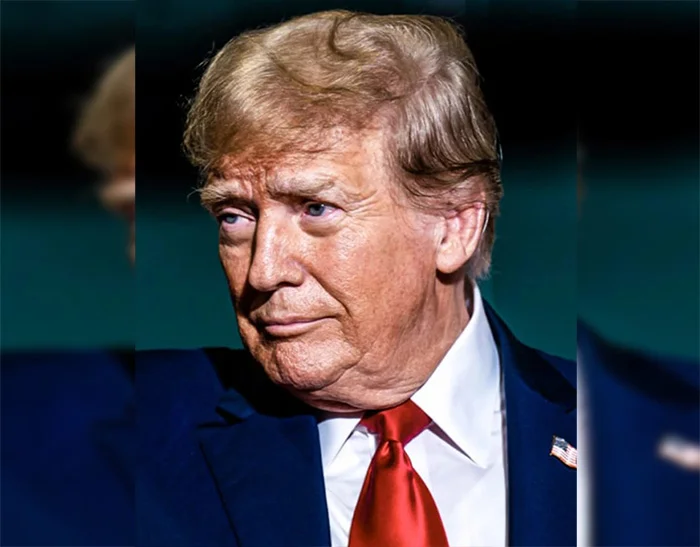
The silver lining of US tariffs for emerging economies:
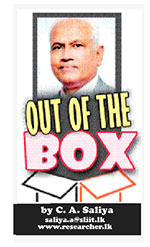 In a world that thrives on interconnectedness, the imposition of U.S. tariffs has been widely discussed through the lens of negativity—trade wars, disrupted supply chains, and market turbulence. However, this narrow view fails to account for the opportunities that arise from such disruptions. While it’s easy to focus on the immediate challenges—rising costs, retaliatory measures, and financial volatility—emerging economies, especially those in Asia and South Asia, are beginning to see a silver lining.
In a world that thrives on interconnectedness, the imposition of U.S. tariffs has been widely discussed through the lens of negativity—trade wars, disrupted supply chains, and market turbulence. However, this narrow view fails to account for the opportunities that arise from such disruptions. While it’s easy to focus on the immediate challenges—rising costs, retaliatory measures, and financial volatility—emerging economies, especially those in Asia and South Asia, are beginning to see a silver lining.
The very disruptions caused by U.S. tariffs can open up pathways for growth, innovation, and strategic realignment. Rather than being passive victims of global trade tensions, countries like Sri Lanka can leverage these moments of upheaval as catalysts for economic renewal, stronger international partnerships, and greater resilience in the face of future global shifts. The silver lining of U.S. tariffs, therefore, lies in how emerging economies can transform these challenges into lasting opportunities for economic development and regional integration.
Traditionally seen as a blunt economic tool, tariffs have made a comeback, especially during and after the Trump administration. While much attention has focused on the negative impacts of tariffs—such as trade slowdowns, retaliatory tariffs, and market volatility—this view overlooks some of the potential positive outcomes, especially in the longer term. This article will explore the opportunities created by U.S. tariffs, particularly for emerging economies like Sri Lanka.
What Are Tariffs and Why Are They Imposed?
Tariffs are taxes placed on imported goods, making them more expensive for consumers. The United States has used tariffs as a way to address trade imbalances, protect domestic industries, and assert its influence on the global stage. For example, tariffs on steel and aluminum were meant to safeguard American manufacturing jobs, while tariffs on Chinese goods were part of broader efforts to correct trade deficits with China and challenge unfair trade practices.
The Immediate Consequences
of U.S. Tariffs
When tariffs are imposed, the immediate effects are usually negative for global trade. Countries that rely on exporting to the U.S. face reduced demand for their goods, which can lead to financial losses. Markets may experience increased volatility, stock prices may drop, and inflation could rise, especially in countries dependent on global supply chains.
For instance, countries like China have retaliated with their own tariffs, leading to a “trade war” that has disrupted global supply chains. As a result, businesses face higher costs and reduced profits, which can also affect consumers who pay more for goods.
The Longer-Term Effects: Economic Reshaping
Although tariffs create challenges, they also lead to changes that could benefit certain economies in the long run. For example, trade wars often force countries to rethink their supply chains. In response to U.S. tariffs, many multinational companies started seeking alternatives to China for manufacturing. This shift, known as the “China +1” strategy, has led to countries like Sri Lanka, Vietnam, and India seeing a rise in foreign investment and a growing role in the global supply chain.
Sri Lanka, with its strategic location and competitive labor costs, has become an attractive destination for businesses looking to diversify their production outside of China. Sri Lanka’s exports, such as tea and apparel, have seen increased demand as companies move their operations to places less affected by tariffs. This shift creates opportunities for countries like Sri Lanka to boost their industrial sectors, attract foreign capital, and integrate into regional trade networks.
The Role of Financial Volatility
One of the immediate reactions to tariffs is financial volatility, as global markets try to adjust to the uncertainty caused by trade conflicts. While this often results in market instability, financial volatility can also serve as a catalyst for broader economic reforms. In times of crisis, countries may be forced to improve their fiscal policies, strengthen their institutions, and diversify their economies.
For example, countries in the emerging world may use the pressure from tariffs to undertake structural reforms that make their economies more resilient. They may improve fiscal governance, attract more investment, and create a more diversified and stable economy. Over time, this can reduce their dependence on any single trading partner and help them weather future economic shocks.
Opportunities for Emerging Economies
Although U.S. tariffs present challenges for emerging economies, especially those that depend on exports to the U.S., they also provide opportunities for strategic realignment. With companies looking for alternatives to China, emerging economies can reposition themselves as attractive investment destinations.
Sri Lanka, for instance, has benefited from this shift in the global supply chain. As businesses look for stable alternatives to Chinese manufacturing, Sri Lanka has seen an increase in demand for its exports, such as textiles and tea. Additionally, foreign direct investment (FDI) in Sri Lanka has been growing, with companies looking to set up production facilities in countries that are less affected by tariff measures.
This shift is not just about attracting investment but also about repositioning a country within regional supply chains. Sri Lanka has the potential to become a key player in the Indian Ocean region, connecting Asia with Europe and Africa. By improving infrastructure, such as ports and digital networks, Sri Lanka can better integrate into global value chains and increase its export capacity.
Sri Lanka’s Response
to Global Shifts
For Sri Lanka, the global effects of U.S. tariffs present both a challenge and an opportunity. The country is currently dealing with debt restructuring, fiscal deficits, and economic instability. However, these global disruptions can be leveraged as a platform for domestic renewal.
Sri Lanka’s response to these shifts includes diversifying its export markets. By increasing trade with other regions, such as Southeast Asia, India, and the EU, Sri Lanka can reduce its reliance on any one country or market. Regional trade agreements like the South Asian Free Trade Area (SAFTA) can help strengthen Sri Lanka’s position in the global market and protect it from the volatility of global trade wars.
Additionally, Sri Lanka has used these global shifts as an opportunity to undertake important fiscal reforms. These reforms, including improving fiscal governance and enhancing investor confidence, can help the country become more resilient in the long term. By addressing internal structural issues, Sri Lanka can better navigate global economic shifts and position itself for sustainable growth.
The Role of Technology and Digitalisation
Technology plays an essential role in Sri Lanka’s strategy to capitalise on global economic changes. The digital transformation of industries, driven in part by U.S. tariffs and trade disruptions, opens new avenues for economic development. For example, Sri Lanka’s growing IT sector, combined with advancements in e-commerce and digital infrastructure, allows the country to offer a variety of services to global markets, including financial services, software development, and education.
By investing in digital infrastructure and embracing new technologies like artificial intelligence and automation, Sri Lanka can position itself as a leader in the regional digital economy. This technological upgrade can help Sri Lanka integrate more deeply into global value chains, boosting exports and creating new economic opportunities. Possible benefits from US tariffs include,
Short-Term Benefits
* Diversified Exports: Emerging economies gain market share by offering alternatives to Chinese products.
* Increased Demand: Tariffs on China boost demand for products from other regions.
* Boost in FDI: Countries attract more foreign investments as supply chains shift.
* Lower Competition: Protectionist measures reduce competition for domestic industries.
Medium-Term Benefits
* Industrial Upgrading: Local industries modernise, innovate, and become more productive.
* Policy Reforms: Financial instability prompts improvements in governance and policies.
* Supply Chain Integration: Economies join more resilient and diversified global supply chains.
* Regional Trade: Strengthened trade partnerships with neighbouring countries and regional organisations.
Long-Term Benefits
* Structural Growth: Policy changes create a more resilient and diversified economy.
* Technological Advancements: Focus on innovation positions economies as leaders in new industries.
* Geopolitical Influence: Adaptation to global changes boosts regional and international influence.
* Better Positioning in Global Value Chains: Emerging economies align with evolving global demands, securing a stronger role in global trade.
A Turning Point for Emerging Economies
While U.S. tariffs initially cause economic disruption, they can also serve as a wake-up call for emerging economies like Sri Lanka. By diversifying trade relationships, investing in technology, and undertaking necessary structural reforms, countries can turn these challenges into long-term growth opportunities. The global shifts triggered by U.S. tariffs provide a unique opportunity for countries like Sri Lanka to reinvent their economic models, enhance their resilience, and position themselves as key players in the evolving global economy.
In this era of trade wars and economic realignments, smaller nations no longer need to simply weather the storm. With the right policies, proactive strategies, and a focus on innovation, countries like Sri Lanka can not only survive the disruptions caused by U.S. tariffs but thrive in the new economic landscape.
(The writer, a senior Chartered Accountant and professional banker, is Professor at SLIIT University, Malabe. He is also the author of the “Doing Social Research and Publishing Results”, a Springer publication (Singapore), and “Samaja Gaveshakaya (in Sinhala). The views and opinions expressed in this article are solely those of the author and do not necessarily reflect the official policy or position of the institution he works for. He can be contacted at saliya.a@slit.lk and www.researcher.com)
Opinion
Friendship with all, but India is No.1
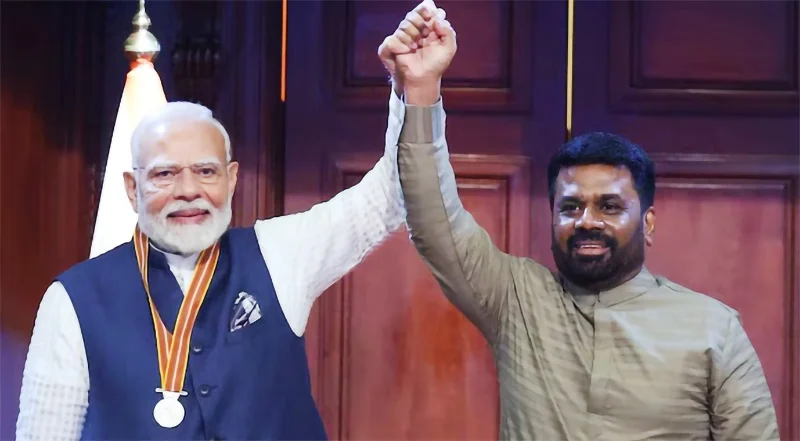
The government did everything in its power to welcome Indian Prime Minister Narendra Modi during the three days in April 4-6 he was in Sri Lanka. The country is known for its hospitality and the government exceeded expectations in its hospitality. There were children to greet the prime minister at the airport along with six cabinet ministers. There was a large banner that described the Indian prime minister in glowing terms. President Anura Kumara Dissanayake also conferred the Sri Lanka Mitra Vibhushana Award, the country’s highest award, to Prime Minister Modi in appreciation of friendship and cooperation. The role that the Indian government under him played in saving Sri Lanka from economic disaster three years ago would merit him nothing less. The gesture was not merely humanitarian; it was also an astute expression of regional leadership rooted in a philosophy of “neighbourhood first,” a cornerstone of Prime Minister Modi’s foreign policy.
India has a key role to play as a stabilising actor in South Asia, especially when regional neighbours falter under economic or political pressure. It has yet to reach its full potential in this regard as seen in its relations with Pakistan and Bangladesh. But with regard to Sri Lanka, India has truly excelled. Prime Minister Modi’s visit to Sri Lanka at this time carried symbolic weight beyond the economic and political. President Dissanayake, in his welcome speech, noted that Prime Minister Modi was the first foreign leader to visit after the new government came to power. By being the first to visit he conferred international importance to the newly elected Sri Lankan leaders. This early gesture conveyed India’s tacit endorsement of President Dissanayake’s government, an endorsement that can be especially valuable for a leader without a traditional elite background. The president also remarked on their shared political origins as both originally came into politics as outsiders to the traditional ruling establishments, creating a bridge between them that hinted at a broader ideological compatibility.
President Dissanayake showed his human touch when he first showed the Mitra Vibushana medal to Prime Minister Modi in its box, then took it out and placed it around the neck of the Indian leader. When the two leaders clasped their hands together and raised them, they sent a message of camaraderie and solidarity, an elder statesman with a long track record with a younger one who has just started on his journey of national leadership. Interestingly, April 5 the date on which the award was conferred was also the 54th anniversary of the commencement of the JVP Insurrection of 1971 (and again in 1987), in which anti-India ideology was a main feature. In making this award, President Dissanayake made the point that he was a truly Sri Lankan leader who had transcended his political roots and going beyond the national to the international.
FINDING TRUST
Six of the seven agreements signed during the visit focused on economic cooperation. These ranged from renewable energy initiatives and digital governance platforms to infrastructure investments in the plantation sector. Particularly noteworthy were agreements on the construction of homes for the descendants of Indian-origin Tamils and the installation of solar units at 5000 religious sites. Both these projects blend development assistance with a careful sensitivity to identity politics. These initiatives align with India’s strategic use of development diplomacy. Unlike China’s approach to aid and infrastructure which has been frequently critiqued for creating debt dependencies India’s model emphasises partnership, cultural affinity, and long-term capacity building.
The seventh agreement has to do with defence and national security issues which has been a longstanding area of concern for both countries. None of the agreements, including the seventh, have been discussed outside of the government-to-government level, though texts of the other six agreements were released during Prime Minister Modi’s visit. Several of the issues concerning economic agreements have been in the public domain eliciting concerns such as the possibility of personal information on Sri Lankan citizens being accessible to India through the digitisation project. However, little is known of the defence agreement. To the extent it meets the needs of the two countries it will serve to build trust between them which is the foundation on which dialogue for mutually beneficial change can take place.
In the past there has been a trust deficit between the two countries. Sri Lankans would be mindful of the perilous security situation the country faced during the time of the war with the LTTE and other Tamil militant organisations, when parts of the country were taken over and governed by the LTTE and the country’s territorial integrity was at stake. This was also a time when Indian military aircraft were deployed in Sri Lankan airspace without the Sri Lankan government’s consent in June 1987, which the Indian government justified as a humanitarian measure, and there were concerns about possible Indian military intervention on a larger scale. This was followed by the signing of the Indo-Lanka Peace Accord the next month in July 1987 which led to the induction of the Indian army as a peacekeeping force into Sri Lanka with government consent.
UNRESTRICTED FRIENDS
The history of Indian intervention in Sri Lanka’s ethnic conflict has given an impetus to Sri Lanka to look to other big powers to act as a counterbalance to India. In more recent years India has expressed its concern at naval vessels from China coming into Sri Lankan waters on the grounds of doing research which could be used against India. Sri Lanka’s engagement with China has strained ties with India, particularly when Chinese infrastructure investments, such as the Hambantota Port, appears to have the potential to serve dual civilian-military purposes. Given China’s growing global reach and its ambition to project influence through the Belt and Road Initiative, Sri Lanka’s geography makes it a critical hub in the Indian Ocean. Hopefully, with the signing of the defence agreement between India and Sri Lanka, these fears and suspicions of the past will be alleviated and soon come to an end.
The position that the government headed by President Dissanayake has taken is to be friends with all. The principle of “friendship with all, enmity with none” is not new, but the stakes are higher today, as global competition between major powers intensifies. India, by virtue of geography and history, will always be Sri Lanka’s first and most important partner. It was India, and not China, not the West, that provided an emergency economic lifeline when Sri Lanka’s foreign reserves evaporated in 2022. That support, amounting to over $4 billion in credit lines and direct aid, was delivered quickly and with minimal conditionality. It also demonstrated how regional proximity can enable faster, more context-aware responses than those offered by multilateral institutions.
The world has become a harsher and more openly self-interested one for countries, even ones that were thought to have indissoluble bonds. Sri Lanka’s biggest export markets are in the United States and European Union and it has received large amounts of economic assistance from Japan and China, though unfortunately some of the loans from China were used inappropriately by former Sri Lankan governments to create white elephant infrastructure projects. Burdened now with enormous debt repayments that bankrupted it in 2022, Sri Lanka continues to need economic resources and markets from around the world. President Dissanayake’s government will understand that closeness to India need not mean an exclusive relationship with it alone. In a multipolar world, friendship (and doing business) with all is both a virtue and a necessity. But among friends, there must always be a first —and for reasons of history, culture, religion, geography and strategic logic, that will be India.
by Jehan Perera
Opinion
Power corrupts …
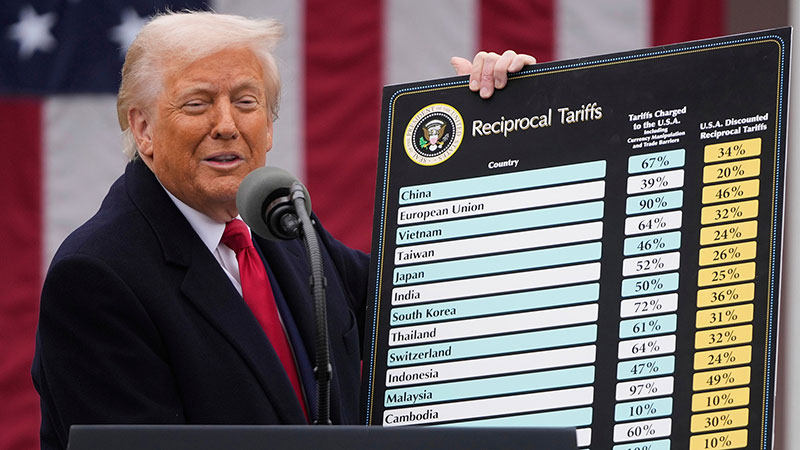
Only America could re-elect an extremist like Trump.
There are planned protests across the US today against President Donald Trump and his adviser billionaire Elon Musk.
More than 1,200 “Hands Off!” demonstrations have been planned by more than 150 groups – including civil rights organisations, labour unions, veterans, fair-election activists and LGBT+ advocates.
This includes a planned protest at the National Mall in Washington as well as locations in all 50 states.
They are in opposition to Trump’s actions: slashing the federal government, his handling of the economy and other issues.
Musk has played a key role in Trump’s second administration, leading efforts to downsize the federal government as head of the newly created Department of Government Efficiency.
Organisers hope these demonstrations will be the largest since Trump came to office.
Speaking of Musk, let’s see how Trump’s second term has impacted America’s richest men …?
Countries across the globe are planning their response, or lack thereof, to Donald Trump’s tariffs.
China responded to Trump’s 34% tariff with its own levy of the same percentage on US imports.
According to state news agency Xinhua, China has accused the US of using tariffs “as a weapon” to suppress Beijing’s economy.
The country’s foreign ministry added that the US should “stop undermining the legitimate development rights of the Chinese people”.
It also warned there were no winners from and no way out for protectionism.
China also claimed that the US tariffs violated World Trade Organization rules – rules it itself has broken a number of times.
Professor Wang Wen, trade expert at the Chongyang Institute for Financial Studies, spoke from Beijing to Kamali Melbourne. He outlined why he believed the tariffs would eventually benefit China, and why Beijing would “never yield” to the US president.
“The basic strategy of China’s tariff policy against Trump is to count on reciprocal rules and defend China’s national interest and dignity. China will never yield to Trump on the issue of tariff war,” he said.
However, Xi Jinping is no democratic leader either, given to expansionism by hook or crook.
China’s booming economy has opened up many opportunities to achieve its sinister objectives – massive investments which weaker economies fall into and become easy prey.
Sri Lanka is no exception. Caught in the middle are the smaller nations who are confused and worried how best to stay alive.
Sunil Dharmabandhu
Wales, UK
-

 Business3 days ago
Business3 days agoColombo Coffee wins coveted management awards
-

 Business5 days ago
Business5 days agoDaraz Sri Lanka ushers in the New Year with 4.4 Avurudu Wasi Pro Max – Sri Lanka’s biggest online Avurudu sale
-

 Features4 days ago
Features4 days agoStarlink in the Global South
-
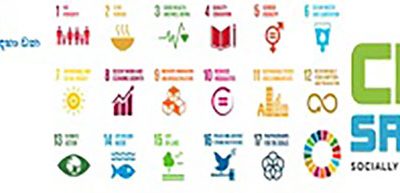
 Business6 days ago
Business6 days agoStrengthening SDG integration into provincial planning and development process
-
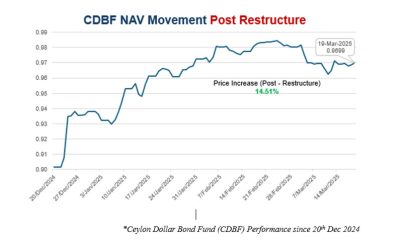
 Business5 days ago
Business5 days agoNew SL Sovereign Bonds win foreign investor confidence
-
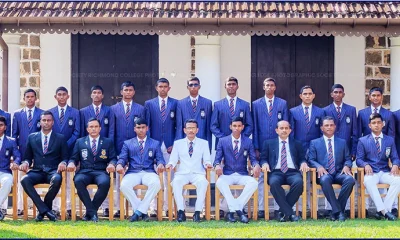
 Sports7 days ago
Sports7 days agoTo play or not to play is Richmond’s decision
-
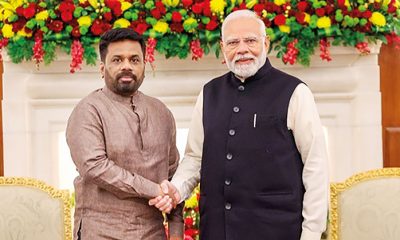
 Features4 days ago
Features4 days agoModi’s Sri Lanka Sojourn
-

 Midweek Review13 hours ago
Midweek Review13 hours agoInequality is killing the Middle Class






